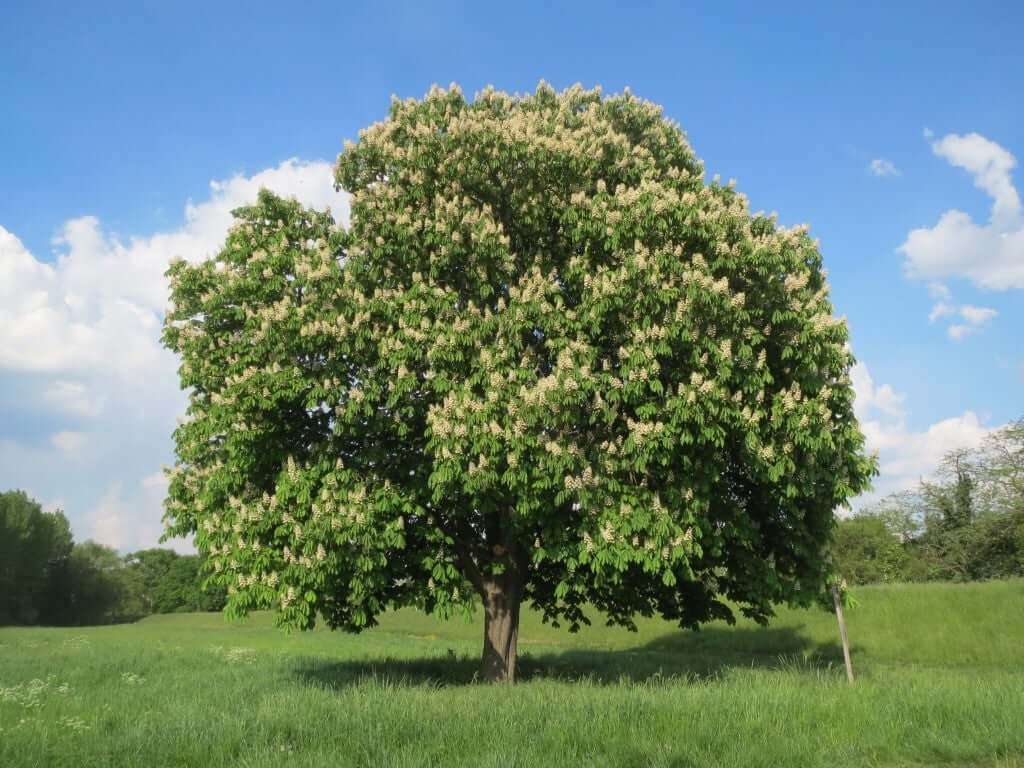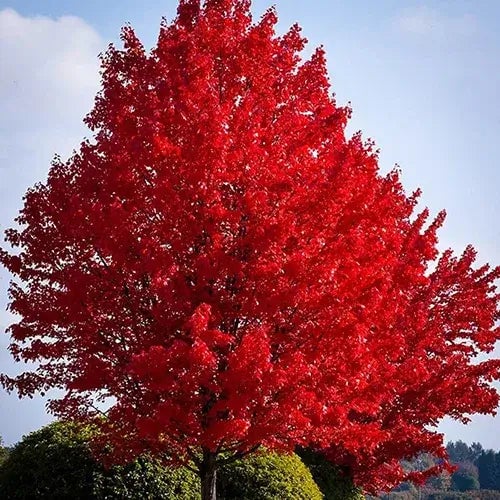Common F.A.Q.s about the Red Maple Tree
Red maple trees or Acer rubrum is one of North America's most sought-after deciduous trees. As common as the other maples, they are famous for their red leaves during autumn and adapt easily to any type of soil and climate. However, if you are choosing to plant a red maple or need to know more about the red maple tree, in that case, you receive a few questions that you may have in your mind. In this article, the frequently asked questions about the red maple trees are explored and answered to give you a better understanding of these marvelous plants.
Is The Red Maple Tree a Good Yard Tree?
Yes, red maple trees are an excellent choice for many yards, and here are some reasons why:
- Aesthetic Appeal: In fall it develops from yellow to bright red, and the autumn scenery is universally picturesque.
- Adaptability: It grows in all types of soils and can, therefore, be cultivated in both urban and rural settings.
- Wildlife Habitat: Wildlife that comes to your compound includes birds that find habitat in these trees and get food from there.
Nevertheless, concern should be taken with the size of the tree and how it will be maintained. Some varieties can grow very tall and thus may not be ideal for small lawns because they achieve heights of 40-60 feet with a spread of 30-50 feet.
Is the red maple tree always red?
No red maple trees are not year-round red because this contradicts the most general knowledge about trees in the maple genus. The tree is predominantly red in autumn since chlorophyll decreases and the red pigments - anthocyanins- appear. It has again mostly green leaves in the spring and summer while the spectacular colors in the fall make this tree famous. Here's a brief timeline of leaf color change:
- Spring: Out of the petioles come new leaves, which primarily have the light color of green.
- Summer: Leaves are fully developed and can perform a process of photosynthesis.
- Fall: They become red, orange, and yellow before they drop from the trees in the fall.
- Winter: What once bore the colors of green and had many leaves is now the timbers of the tree take center stage and display itself in the sky.
How Fast Do They Grow?
Red maple trees are among the fast-growing trees that may benefit people who want to have a beautiful garden instantly. Overall, they can reach heights of 1 to 2 feet annually in the right environment. Factors influencing their growth rate include:
- Soil Quality: Warm and loose with reasonable quantities of loam will help the plant experience growth at a faster rate than in poor, compacted soil.
- Water Availability: Watering is also well practiced so that there would be improvement in growth during dry months.
- Sunlight: It can germinate in full sunlight to a partially shaded position, improving growth rates.
Therefore, taking good care will encourage an outstanding growth rate in your red maple tree.
When Does a Red Maple Tree Bear Cones?
The red maple trees are known to live from 60 to 80 years, although some may live longer under desirable conditions. Factors affecting longevity include:
- Environmental Stress: Factors like pollution, soil depletion, and adverse weathers reduce lifespan.
- Pest and Disease Management: Pest and disease attacks are more prevalent on unhealthy trees, implying reduced tree life expectancy.
- Proper Pruning: Regular maintenance can go a long way toward avoiding problems with tree health.
What Is the Color of the Red Maple tree in winter?
This tree's leaves establish the color change during the early to middle of October, depending on the climate and geographic location. Several factors influence the timing of this change:
- Temperature Fluctuations: Warmer weather at nights and sunny days again encourages heightened chromaticity.
- Soil Moisture: Brighter foliage may occur if a wet growing season is followed by a dry autumn.
How Do You Take Care of a Red Maple Tree?
Proper care for a red maple tree involves the following essential practices:
- Watering: Water your tree from time to time, especially in the first years after planting and especially when there is a dry spell.
- Mulching: This should be done by putting a mulch around the base to retain moisture and weed control.
- Fertilize: Apply a well balanced fertilize in spring to support the plant's development.
- Pruning: Prune the trees lightly to thin out dead or crossing branches to promote air circulation and the architectural appearance of the trees.
Does The Red Maple Tree Bear Fruits?
The seeds of red maple trees are available in late spring or early summer. These seeds are called samaras and have a special wing-like structure that extends to help them fly from the mother plant. Here's some additional information on seed production:
- Female Trees: Red maple is of special interest since only the female trees produce seed.
- Seed Dispersal: Sometimes, the seeds may be carried by wind, and these may germinate and may grow into saplings, sometimes.
- Timing: Spermatogenesis is commonly at its finest in their 20s but can persist for the entire lifespan of the tree.
What is the best growing environment for red maples?
Red maples thrive in a multitude of environments, but they perform best under specific conditions:
- Soil: It grows well in soils with good drainage and rich in loams but can also grow in clay and sandy soils.
- Sunlight: The plant prefers an area with full to partial sun exposure to thrive well.
- Water: Favorites are well-forested regions frequently encountered at river banks and around swampy areas. But in established populations, they also perform well under moderate conditions with relative humidity.
Conclusion
Red maple trees are ornamental, functional, and, all in all, have great value to any given environment. The multitude of colors presented and the relatively easy care make them contribute to the positive aesthetics, as well as the better functioning of ecosystems. It means that you will be capable of providing all that your red maple tree would need to grow and be healthy and make your yard appealing all the time.
Regardless of whether one is just beginning a planting venture and has never heard of it or is a tree enthusiast who wants to read up on such trees, the red maples are useful and attractive. Think of planting one today, getting the myriad privileges, and moving closer to creating a better outdoor landscape.
Read more

The red flowering dogwood trees are early Spring bloomers and offer vibrance in landscaping with each tree having thousands of elegant blooms.

The Chinese chestnut tree is scientifically called Castanea mollissima and is a deciduous tree in the Beech family. Well-known for tasty nuts and their vigor, this tree has received significant att...



